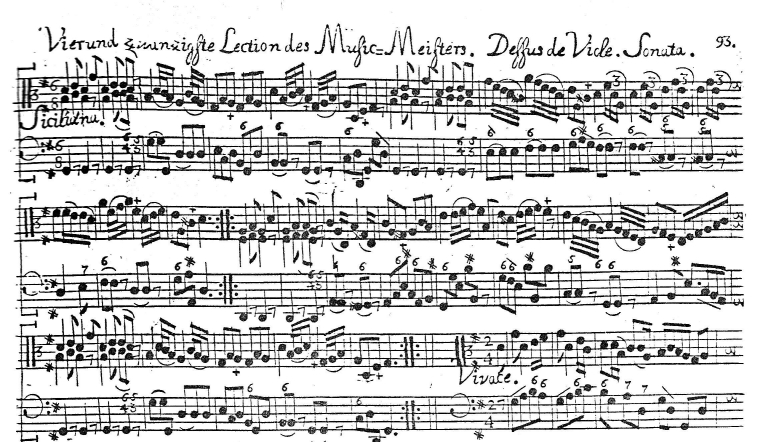Notation in Telemann's Sonata for Treble Viol, TWV41:G6
I have been looking a little at a sonata by Telemann for the treble viol in G major from Der getreue Music-Meister.

Often, on the treble viol, a practical challenge is that a lot of music is ascending quite high, but in this piece everything keeps moving on the lowest strings in stead. The music actualy descends to c#, a semitone lower than my treble viol, if tuned normally, but the music also clearly states "Dessus de viole" on the top right side of the page, so it is obviously not meant for the bass or tenor viol.
So, what does this mean? I think it means that Telemann's notation is to be played an octave up. When playing this Sonata an octave up, it lays in the usual range utilised for solo pieces on the treble viol. If not played ottava alto, the piece could just as well be played on the bass viol.
This notation makes it very easy for a player used to the bass viol to play this Sonata on the treble viol. He would just play as if playing the bass viol and it would sound an octave up on the treble viol. On the other hand, a player used to reading the alto clef loco on the treble viol would have to transpose the piece an octave up.
Maybe I am over-interpreting, but this also suggests to me that it might have been common practise at the time to play music for the bass viol on the treble viol from the same notation, thus sounding an octave up. If it wasn't customary to play solo music written in the alto clef an octave up on the treble viol, Telemann would have had to mention that 8va alto is how the music should be played in his print, but since he didn't, either I am wrong in assuming it is to be played an octave up, or this was the usual way of playing solo music written in the alto clef when the treble viol was used. (At least in northern Germany in Telemann's time.)
Playing bass viol solo repertoire an octave up on the treble viol would add a lot of solo repertoire for the treble viol. Of course, French repertoire needing the 7th string would be problematic to play on a treble, but otherwise, any piece for the bass could be played on the treble and vise versa, as long as it is in the usual solo + continuo format. (The viol sonatas by J. S. Bach, that are in fact trio sonatas with the viol on the middle part would not work on the treble viol without some alterations, since suddenly the middle part would be above the real upper part.)
The ironic thing is that the "easy" octave transposing notation that I believe is used in this piece, is not easy at all for me, as I didn't come to the treble viol from the bass viol, but from the baroque cello, which means that I have absolutely no point of reference to where I would play if playing as written on the bass viol (ie transposing an octave up). On the treble viol, I am more used to reading the treble clef, which is a second lower than the alto clef an octave up, and the french treble, which is a second higher than the alto clef an octave up (or could be read as the bass clef two octaves up). So, I can easily play a diatonic second wrong in either direction as a result. For me, this "easy" notation actually makes the piece much harder to play, at least during the inital phase of deciphering the notation.